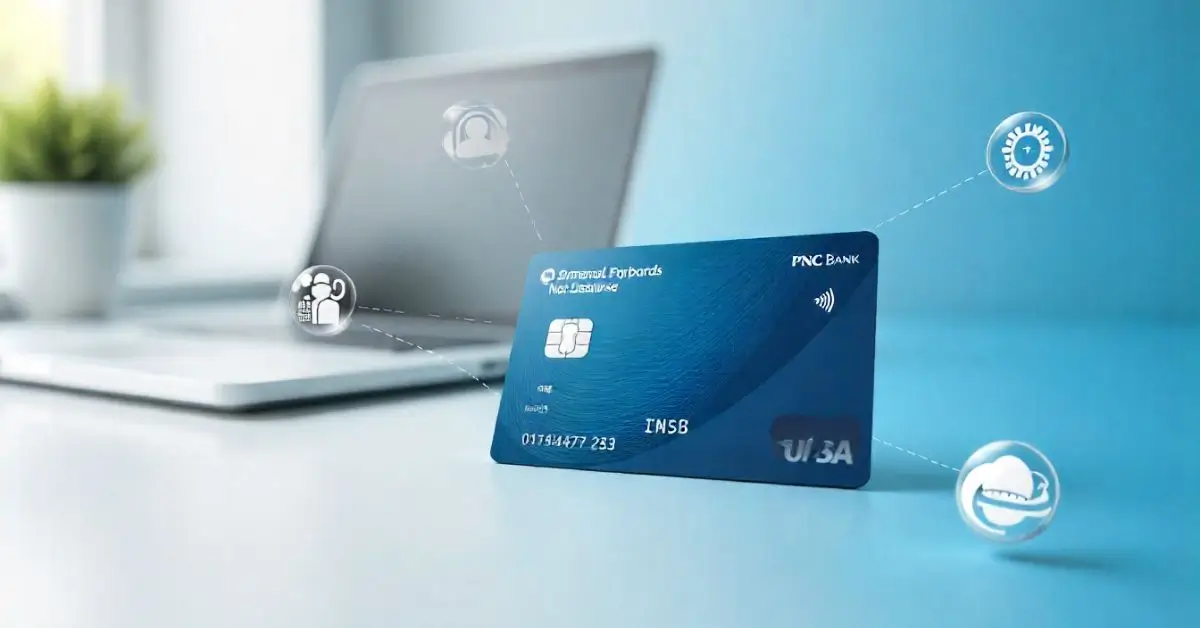GENERAL
Fiji: A Tropical Paradise of Beauty and Adventure

Fiji, a stunning archipelago in the South Pacific, is renowned for its pristine beaches, vibrant coral reefs, and warm hospitality. Whether you’re dreaming of a romantic getaway, an adventurous escape, or a serene retreat, Fiji offers an unforgettable experience. This guide dives deep into what makes it a must-visit destination, covering its breathtaking landscapes, rich culture, and practical travel tips.
Why Fiji Should Be Your Next Travel Destination
Its allure lies in its perfect blend of relaxation and adventure. With over 300 islands, each boasting unique charm, visitors can explore lush rainforests, crystal-clear waters, and vibrant marine life. Additionally, Fijian culture is deeply rooted in tradition, offering travelers an immersive experience.
The Natural Beauty of Fiji
It’s landscapes are nothing short of spectacular. From the famous Mamanuca and Yasawa Islands to the untouched beauty of Kadavu, nature lovers will find endless opportunities for exploration.
-
Pristine Beaches: Fiji is home to some of the world’s most beautiful beaches, with powdery white sand and turquoise waters.
-
Lush Rainforests: Inland, dense jungles teem with exotic wildlife and cascading waterfalls.
-
Vibrant Coral Reefs: The Great Astrolabe Reef is a diver’s paradise, offering encounters with manta rays, sharks, and colorful fish.
Cultural Richness and Fijian Hospitality
Fijians are known for their warmth and generosity. Visitors can partake in traditional ceremonies like the kava ritual, enjoy local dances, and savor authentic Fijian cuisine. Staying in a bure (traditional thatched hut) or engaging with village communities provides a deeper connection to the culture.
Top Activities and Experiences in Fiji
Whether you seek relaxation or adrenaline-pumping adventures, it delivers.
Water-Based Adventures
-
Scuba Diving & Snorkeling: Explore the soft coral capital of the world in the Bligh Waters or the Rainbow Reef.
-
Surfing: Cloudbreak in Tavarua is a world-famous surf spot for experienced wave riders.
-
Sailing & Island Hopping: Charter a yacht or join a cruise to discover hidden lagoons and secluded beaches.
Land-Based Excursions
-
Hiking in Bouma National Park: Trails lead to breathtaking waterfalls and panoramic viewpoints.
-
Zip-lining and Jungle Treks: Adventure parks in Pacific Harbour offer thrilling canopy tours.
-
Cultural Village Tours: Learn about Fijian history, crafts, and traditions firsthand.
Fiji Travel Tips: Planning Your Perfect Trip
To make the most of your Fiji vacation, consider these practical tips:
Best Time to Visit
Fiji enjoys a tropical climate year-round, but the dry season (May–October) offers the most pleasant weather. However, the wet season (November–April) brings lush greenery and fewer crowds.
Accommodation Options
From luxury resorts to budget-friendly hostels, Fiji caters to all travelers:
-
Luxury Resorts: Private island resorts like Likuliku and Laucala offer overwater bungalows and world-class service.
-
Mid-Range Hotels: Mainland hotels in Nadi and Suva provide comfort at reasonable prices.
-
Budget Stays: Backpacker hostels and eco-lodges are great for cost-conscious travelers.
Transportation
-
Domestic Flights: Essential for island hopping, with frequent services to popular destinations.
-
Ferries & Boats: A scenic and affordable way to travel between islands.
-
Taxis & Buses: Convenient for short distances on Viti Levu and Vanua Levu.
Fiji vs. Other Tropical Destinations: A Comparison
To help you decide if Fiji is right for you, here’s a comparison with other popular tropical locations:
| Feature | Fiji | Maldives | Bali | Hawaii | Thailand |
|---|---|---|---|---|---|
| Cost | Moderate | Expensive | Affordable | Expensive | Affordable |
| Beaches | Pristine | Stunning | Varied | Volcanic | Lively |
| Culture | Rich & Warm | Relaxed | Spiritual | Polynesian | Vibrant |
| Adventure | High | Limited | Moderate | High | High |
| Accessibility | Moderate | Remote | Easy | Easy | Easy |
Fiji stands out for its cultural authenticity and diverse activities, making it ideal for travelers seeking both relaxation and adventure.
Sustainable Tourism in Fiji
Fiji is committed to preserving its natural beauty and cultural heritage. Many resorts follow eco-friendly practices, such as solar energy use and coral reef conservation programs. Travelers can contribute by:
-
Supporting local businesses and artisans.
-
Participating in reef-safe snorkeling and diving.
-
Respecting cultural customs and village protocols.
Final Thoughts
Fiji remains one of the most enchanting destinations in the world, offering a perfect mix of relaxation, adventure, and cultural immersion. Whether you’re diving into its turquoise waters, hiking through lush jungles, or simply unwinding on a secluded beach, Fiji promises an unforgettable experience.
FAQs
What Is the Best Time to Visit Fiji?
The dry season (May–October) offers sunny skies and cooler temperatures, making it ideal for outdoor activities. However, the wet season (November–April) is less crowded and more budget-friendly.
Do I Need a Visa to Visit Fiji?
Most visitors from the US, UK, Australia, and New Zealand receive a free 4-month visa upon arrival. Always check entry requirements before traveling.
Is Fiji Safe for Tourists?
It is generally very safe, with low crime rates in tourist areas. However, petty theft can occur, so it’s wise to secure valuables.
What Currency Is Used in Fiji?
The Fijian dollar (FJD) is the local currency. Credit cards are widely accepted, but cash is useful in remote areas.
What Language Is Spoken in Fiji?
English is widely spoken, alongside Fijian and Hindi. Locals appreciate simple greetings like “Bula!” (hello).
How Do I Get Around Fiji?
Domestic flights, ferries, and private boats are the best ways to explore different islands. On the main islands, taxis and buses are affordable options.
GENERAL
Business Auto Loans: A Complete Guide to Financing Your Company Vehicles

Every growing business needs reliable transportation, and business auto loans provide the financial flexibility to acquire vehicles without straining cash flow. Whether you’re a small business owner expanding your fleet or a corporation upgrading to fuel-efficient models, understanding how these loans work can save you time and money. This guide covers everything from loan types and eligibility to expert tips for securing the best rates—helping you make an informed decision for your company’s needs.
How Business Auto Loans Work
Business auto loans are specialized financing options designed to help companies purchase vehicles for commercial use. Unlike personal auto loans, these are tailored to business needs, offering higher borrowing limits, flexible repayment terms, and potential tax benefits. Lenders evaluate your creditworthiness, business revenue, and the vehicle’s purpose before approving the loan.
Types of Business Auto Loans
-
Term Loans – A lump-sum amount repaid over a fixed period with interest. Ideal for businesses with strong credit.
-
Equipment Financing – The vehicle serves as collateral, often resulting in lower rates.
-
Commercial Leasing – Businesses “rent” the vehicle for a set term, with options to buy afterward.
-
SBA Loans – Government-backed loans with competitive rates for eligible small businesses.
Key Benefits of Business Auto Loans
Investing in a business auto loan offers several advantages:
-
Preserved Cash Flow – Avoid large upfront payments and allocate capital to other operational needs.
-
Tax Deductions – Interest payments and depreciation may qualify as business expenses.
-
Improved Credit Profile – Timely repayments can strengthen your business credit score.
-
Fleet Expansion – Scale your operations without financial strain.
However, failing to secure favorable terms can lead to higher costs, so comparing lenders is crucial.
Eligibility Requirements
Lenders assess multiple factors before approving a business auto loan:
-
Credit Score – A strong personal or business credit score (680+) increases approval odds.
-
Business Revenue – Proof of consistent income reassures lenders of repayment capability.
-
Down Payment – Typically 10%–20% of the vehicle’s price.
-
Business Age – Older businesses (2+ years) often qualify for better rates.
Startups or businesses with poor credit may need to explore alternative lenders or offer collateral.
Comparing Business Auto Loan Options
To help you evaluate lenders, here’s a comparison of five key features:
| Feature | Banks | Credit Unions | Online Lenders | Dealership Financing | SBA Loans |
|---|---|---|---|---|---|
| Interest Rates | Low | Competitive | Moderate-High | Varies | Lowest |
| Approval Speed | Slow | Moderate | Fast | Instant | Slow |
| Eligibility | Strict | Moderate | Lenient | Flexible | Strict |
| Loan Terms | 3–7 yrs | 2–6 yrs | 1–5 yrs | 2–5 yrs | Up to 10 yrs |
| Down Payment | 10–20% | 5–15% | 0–15% | 0–10% | 10–30% |
Banks and SBA loans offer the best rates but require strong credentials, while online lenders provide quicker access at higher costs.
Tips for Securing the Best Business Auto Loan
-
Check Your Credit – Review your business and personal credit reports for errors.
-
Compare Multiple Lenders – Rates and terms vary significantly.
-
Negotiate Terms – Use competing offers as leverage.
-
Consider Total Costs – Include insurance, maintenance, and fuel in your budget.
-
Pre-Approval Advantage – Strengthens your position when dealing with dealerships.
Avoid long-term loans with excessive interest, as they can inflate the total cost unnecessarily.
Common Pitfalls to Avoid
-
Overborrowing – Purchase only what your business needs.
-
Ignoring Fees – Origination fees, prepayment penalties, and late charges add up.
-
Skipping Gap Insurance – Covers the difference if the vehicle is totaled and the loan isn’t fully paid.
-
Rushing the Process – Hasty decisions lead to unfavorable terms.
Final Thoughts
Business auto loans are a powerful tool for companies seeking to acquire vehicles without depleting working capital. By understanding loan types, eligibility, and lender comparisons, you can secure financing that aligns with your business goals. Always prioritize transparency, compare offers, and plan for long-term affordability to maximize the benefits.
FAQs
What’s the difference between a business auto loan and a personal auto loan?
Business auto loans are designed for commercial use, offering higher loan amounts, tax benefits, and flexible terms tailored to companies. Personal loans are based on individual credit and lack these advantages.
Can startups qualify for business auto loans?
Yes, but options may be limited. Startups might need a strong personal credit score, collateral, or a larger down payment to secure approval.
Are interest payments on business auto loans tax-deductible?
In most cases, yes. The IRS allows businesses to deduct interest expenses on loans used for operational assets like vehicles. Consult a tax professional for specifics.
How long does it take to get approved?
Traditional banks may take weeks, while online lenders or dealership financing can approve loans within hours or days.
What’s better: leasing or buying with a loan?
Leasing offers lower monthly payments and flexibility, while buying builds equity and offers long-term savings. Evaluate your business’s cash flow and vehicle needs.
Can I refinance a business auto loan?
Absolutely. Refinancing can lower interest rates or monthly payments if your credit or market conditions improve.
GENERAL
PNC Bank Business Credit Card: A Smart Financial Tool for Your Company

Managing business expenses efficiently is crucial for growth, and the PNC Bank Business Credit Card offers a powerful solution. Designed to streamline cash flow, simplify tracking, and reward spending, this card helps businesses of all sizes optimize their financial operations. Whether you’re a small business owner or manage a larger enterprise, understanding the benefits, features, and potential drawbacks of this card can help you make an informed decision.
Why Choose the PNC Bank Business Credit Card?
A business credit card is more than just a payment tool—it’s a financial management asset. The PNC Bank Business Credit Card stands out with competitive rewards, expense management tools, and flexible payment options. Here’s why it could be the right fit for your business:
1. Rewards and Cash Back
Earn points or cash back on every purchase, helping offset costs. Many cards offer higher rewards in key spending categories like office supplies, travel, or gas—ideal for businesses with frequent expenses in these areas.
2. Expense Tracking and Reporting
Simplify bookkeeping with detailed monthly statements and customizable reports. Some cards integrate with accounting software, reducing manual entry errors and saving time.
3. Employee Spending Controls
Issue cards to employees while setting individual spending limits. This minimizes misuse and ensures budgets stay on track.
4. No Personal Liability Protection
Unlike personal credit cards, some business cards don’t hold owners personally liable for unpaid balances—though terms vary.
5. Introductory APR Offers
Take advantage of low or 0% APR promotions to finance large purchases or manage cash flow during slower months.
Comparing the PNC Bank Business Credit Card to Competitors
To help you evaluate whether this card meets your needs, here’s a comparison of five key features:
| Feature | PNC Bank Business Credit Card | Competitor A | Competitor B | Competitor C |
|---|---|---|---|---|
| Annual Fee | Low or waived first year | Moderate | High | None |
| Rewards Rate | Up to 1.5% cash back | 1% flat | 2% on select categories | 1.25% |
| Employee Cards | Free with spending controls | Fee applies | Limited controls | Free but no controls |
| APR | Competitive variable rate | Higher rate | Low intro APR | Standard rate |
| Expense Tools | Advanced reporting | Basic | Integrates with accounting software | Minimal |
This table highlights how the PNC Bank Business Credit Card balances cost, rewards, and functionality, making it a strong contender for businesses prioritizing flexibility and control.
How to Apply for a PNC Bank Business Credit Card
Applying is straightforward, but approval depends on your business’s financial health. Follow these steps:
1. Check Eligibility Requirements
Most issuers require a good personal credit score (670+), a registered business, and proof of revenue.
2. Gather Necessary Documents
Prepare tax IDs, financial statements, and personal identification before applying.
3. Submit Your Application
Apply online or at a PNC branch. Approval can take minutes or a few days, depending on verification needs.
4. Activate and Start Using
Once approved, activate your card and enroll in online banking to monitor transactions.
Potential Drawbacks to Consider
While the PNC Bank Business Credit Card offers many advantages, it’s important to weigh potential downsides:
-
Variable APR After Intro Period – If you carry a balance, interest costs can add up quickly.
-
Rewards Redemption Limits – Some programs restrict how or when you redeem points.
-
Personal Guarantee Requirement – Many business cards require a personal credit check, which could impact your score if mismanaged.
Maximizing Your Card’s Benefits
To get the most from your PNC Bank Business Credit Card, follow these best practices:
-
Pay On Time – Avoid late fees and interest by setting up autopay.
-
Monitor Spending – Review statements monthly to detect fraud or overspending.
-
Leverage Rewards – Use points for travel, statement credits, or reinvestment in your business.
-
Negotiate Fees – Some issuers waive annual fees if you ask, especially with strong spending history.
Final Thoughts
The PNC Bank Business Credit Card provides a robust financial tool for businesses seeking rewards, spending controls, and expense management. By understanding its features, costs, and best-use strategies, you can decide if it aligns with your company’s needs.
FAQs
What credit score is needed for a PNC Bank Business Credit Card?
A FICO score of 670 or higher is typically required, though some cards may demand a stronger credit profile for premium rewards.
Does the PNC Bank Business Credit Card report to personal credit bureaus?
Most business cards report delinquencies to personal bureaus but not routine activity—check terms to confirm.
Can I get employee cards for free?
Yes, PNC offers complimentary employee cards with customizable spending limits.
Is there a 0% introductory APR offer?
Some PNC cards include introductory 0% APR periods, usually lasting 6–12 months.
How do I redeem cash back rewards?
Rewards can typically be redeemed as statement credits, checks, or deposits into a PNC account.
What happens if I miss a payment?
Late payments may incur fees and penalty APRs, and could harm your credit score if reported.
GENERAL
Belle Chasse Ferry Schedule: Your Complete Guide for Smooth Crossings

Planning a trip across the Mississippi River? The Belle Chasse Ferry schedule is essential for commuters, tourists, and locals alike. Whether you’re heading to work, exploring Louisiana’s scenic routes, or transporting goods, knowing the ferry’s operating hours, frequency, and potential delays ensures a stress-free journey. This guide covers everything you need—from real-time updates to cost comparisons—helping you navigate the ferry system with confidence.
Why the Belle Chasse Ferry Matters
The Belle Chasse Ferry is a vital transportation link connecting Plaquemines Parish to the West Bank of New Orleans. Unlike congested bridges, the ferry offers a relaxing alternative with picturesque river views. However, unexpected schedule changes or long waits can disrupt travel plans, making it crucial to stay informed.
Key Benefits of Using the Belle Chasse Ferry
-
Avoids traffic bottlenecks on major bridges.
-
Cost-effective compared to toll routes.
-
Scenic experience with views of the Mississippi River.
Belle Chasse Ferry Schedule: Operating Hours and Frequency
The Belle Chasse Ferry schedule typically runs daily, but exact timings vary. Here’s what to expect:
Weekday Schedule
-
First departure: 5:00 AM (East Bank to West Bank)
-
Last departure: 9:00 PM (West Bank to East Bank)
-
Frequency: Every 20–30 minutes during peak hours (6:00 AM–8:30 AM and 4:00 PM–6:30 PM).
Weekend and Holiday Schedule
-
First departure: 6:30 AM
-
Last departure: 8:30 PM
-
Frequency: Every 45 minutes.
Note: Schedules may shift due to weather, maintenance, or emergencies. Always check for updates before heading out.
How Weather Affects the Belle Chasse Ferry Schedule
Heavy fog, high winds, or storms can suspend operations temporarily. In extreme cases, the ferry may halt service for hours or even a full day. If you’re traveling during hurricane season (June–November), monitor local advisories closely.
Comparing the Belle Chasse Ferry to Alternative Routes
To help you decide whether the ferry suits your needs, here’s a comparison of five key features:
| Feature | Belle Chasse Ferry | Crescent City Connection Bridge | Harvey Tunnel |
|---|---|---|---|
| Cost | Free | $1–$2 (toll) | Free |
| Efficiency | Moderate (wait times) | Fast (unless congested) | Fast |
| Ease of Use | Simple boarding | Subject to traffic jams | Narrow lanes |
| Scalability | Limited capacity | Handles high volume | Moderate |
| Benefits | Scenic, no tolls | Reliable in fair weather | Quick access |
Tips for a Hassle-Free Ferry Experience
-
Arrive Early: Boarding queues can form quickly during rush hour.
-
Check Real-Time Updates: Follow local transit alerts for delays.
-
Prepare for Weather: Bring sunscreen in summer or an umbrella in rain.
-
Know the Alternatives: Have a backup route in case of cancellations.
What to Do If the Ferry Is Delayed
Delays happen—mechanical issues, high traffic, or weather disruptions can extend wait times. If you’re on a tight schedule, consider the Crescent City Connection Bridge or carpooling to reduce stress.
Future Improvements to the Belle Chasse Ferry System
Officials have discussed modernizing the ferry fleet and increasing frequency to meet growing demand. While no official timeline exists, upgrades could reduce wait times and improve reliability.
Final Thoughts
The Belle Chasse Ferry schedule is a lifeline for many, offering a convenient and scenic way to cross the Mississippi. By planning ahead and staying updated, you can avoid delays and enjoy a smooth trip. Whether you’re a daily commuter or a first-time visitor, this guide ensures you’re prepared for every possibility.
FAQs
How Often Does the Belle Chasse Ferry Run?
The ferry operates every 20–30 minutes on weekdays and every 45 minutes on weekends. Peak hours see more frequent departures.
Is the Belle Chasse Ferry Free?
Yes, the ferry is currently toll-free for all vehicles and pedestrians.
What Time Does the Last Ferry Leave?
The last weekday departure is at 9:00 PM, while weekends end at 8:30 PM.
Can I Walk onto the Belle Chasse Ferry?
Absolutely! Pedestrians and cyclists are welcome without additional fees.
Does the Ferry Operate During Mardi Gras?
Yes, but schedules may adjust for parades and events. Verify timings in advance.
What Happens If I Miss the Last Ferry?
You’ll need to use an alternate route like the Crescent City Connection Bridge or arrange overnight accommodations.
-

 GENERAL4 months ago
GENERAL4 months agoDoge 5000 Check: What It Is and Why It Matters
-

 ENTERTAINMENT4 months ago
ENTERTAINMENT4 months agoVirginia Tech Football News: Latest Updates, Key Insights, and Future Outlook
-

 TECHNOLOGY5 months ago
TECHNOLOGY5 months agoBroadviewNet: The Ultimate Solution for Reliable and Scalable Connectivity
-

 TECHNOLOGY6 months ago
TECHNOLOGY6 months agoSlimyim Regretevator: A Game-Changer in Adaptive Feedback Loops
-

 GENERAL4 months ago
GENERAL4 months agoCoomer Party: The Ultimate Guide to Understanding the Trend
-

 GENERAL5 months ago
GENERAL5 months agoAnne Dias: A Trailblazer in Finance and Philanthropy
-

 TECHNOLOGY3 months ago
TECHNOLOGY3 months agoHow a Med Tech Certificate Can Launch Your Career
-

 TECHNOLOGY5 months ago
TECHNOLOGY5 months agoBit Browser: The Future of Web Browsing Experience
